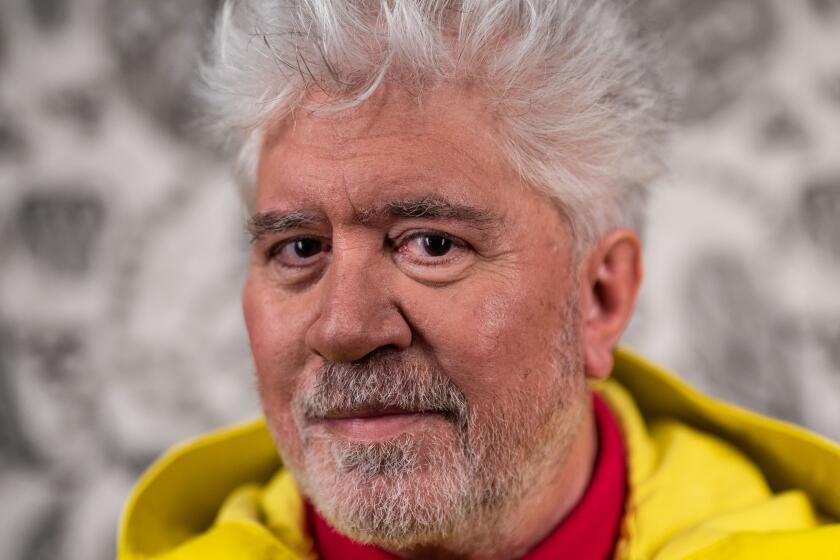Rising, continually, from the ashes
There is a sad irony to the title of Michael Haag’s “Alexandria: City of Memory,” for Alexandria’s memory may be the worst of any great city. Ever since its founding by Alexander the Great in 331 BC, successive waves of conquerors have destroyed its monuments, repaved its streets and built the city up from the soil, erasing past Alexandrias over and over again.
From the original Alexandria, once the center of the Hellenistic world, little remains besides Pompey’s Pillar and some columns that may have formed part of the ancient Gymnasium. (Cleopatra’s Needles, two obelisks of the Caesareum, still exist but were sold off in the 19th century and shipped to New York and London.) Scattered piles of brick, remnants of the city’s Roman and Byzantine eras, exist in some places. But the city’s original street plan is a mystery, as are the exact locations of Alexander’s tomb and the famous Royal Library.
Unlike Rome and Constantinople, cities that age reluctantly and grow by accretion, with new buildings emerging alongside ancient ruins, Alexandria greets each epoch with a new face. In today’s gritty, anonymous Alexandria, one can hardly imagine its fabled past. Not only have all the streets been renamed -- the Canopic Way, later called the Rue Rosette and then the Rue Fuad, is now known as Sharia Horreya (“Liberty Street”) -- but so has the city itself. Alexandria is now Iskandariya, an undistinguished and overcrowded Egyptian port.
Haag’s book focuses on the half-century between 1882 and 1936, which he calls the “heyday of cosmopolitan Alexandria.” This cosmopolitanism, though undesirable to many native Egyptians, was made possible by imperial ambitions. Europe -- and especially Britain -- had provided strong financial support for Egypt’s government since the construction of the Suez Canal in 1869. When Col. Ahmed Arabi, a native Egyptian and the minister of war, led a nationalist uprising against the European-backed government in 1882, Britain intervened. After crushing the rebellion, Britain tacitly assumed control of the country; in 1914, it declared Egypt a protectorate. By the end of World War I, as much as a third of the population was not ethnically Egyptian. Greeks made up the largest foreign constituency, followed by Italians, English, French, Russians, Romanians and many others.
In E.M. Forster’s guide book, “Alexandria: A History and a Guide,” he complains that “history is too much an affair of armies and kings.... Only through literature can the past be recovered.” Haag agrees. He traces the history of cosmopolitan Alexandria primarily through interlaced biographical and literary studies of Forster, Lawrence Durrell and the great Greek poet Constantine Cavafy, all of whom spent formative years in the city.
Forster moved there in 1915, after finishing “Howards End” and “Maurice” and as he was conceiving “A Passage to India”; while working for the British Red Cross during the war, he had his first serious romantic relationship, with an Egyptian tram conductor named Mohammed el Adl. Durrell moved to the city from his beloved Corfu in 1939 and there conceived his four-novel masterpiece, “The Alexandria Quartet.” In Alexandria he was left by his first wife and met his second and third wives, both of whom served as models for the two heroines of the “Quartet.” Of the three writers, Cavafy was the only native Alexandrian. The city, and its vanished history, inspired much of his poetry. In “In the Same Space,” he writes:
The setting of houses, cafes, the neighborhood
that I’ve seen and walked through years on end:
I created you while I was happy, while I was sad,
with so many incidents, so many details.
And, for me, the whole of you has been transformed into feeling.
Haag’s style is, appropriately, associative. He is a charming, easily distracted tour guide who begins by quoting a scene from a novel only to wind up in a discussion of the city’s cotton economy, or a masked ball, or a dialogue from Theocritus’ Fifteenth Idyll describing life in Alexandria’s Greek quarter in the 3rd century BC -- all in a single rhetorical burst. Although this technique occasionally ends in confusion, Haag’s style is consistent with his thesis. Flying between memories, anecdotes and myths, he creates a vivid tapestry of the city. Of this it can be said, as one of Theocritus’ characters remarks upon seeing an elaborate embroidery: “Why the figures seem to stand up and to move, they’re not patterns, they are alive.”
In re-creating Alexandria from memories, Haag enacts a tradition as old as the city itself. When Alexander came upon the narrow strip of land on the Mediterranean coast, he sketched a proposed map of his future city on the soil. Having no chalk, he used grains of barley. He carefully laid out a street plan, indicating the location of its markets, temples and fortifications. But as soon as he had finished, a huge flock of birds swept down and devoured all of the grain. Alexander watched in horror as his great city, for the first of many times, disappeared into the air. *
More to Read
Sign up for our Book Club newsletter
Get the latest news, events and more from the Los Angeles Times Book Club, and help us get L.A. reading and talking.
You may occasionally receive promotional content from the Los Angeles Times.






